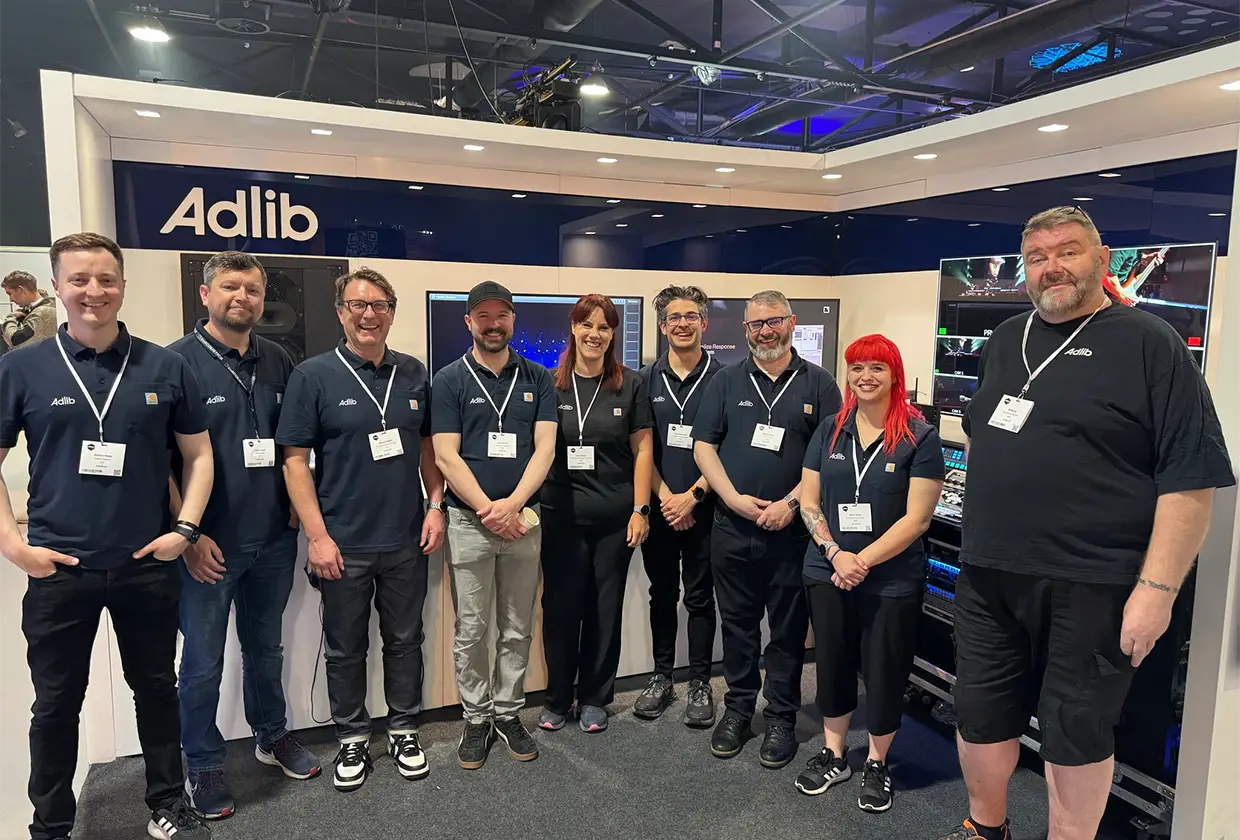Remember the clearance of the shared license spectrum in channel 69 for wireless microphones and IEM systems that became channel 38? A similar process is now taking place in the 700MHz band.
This post will talk you through some of the key things to consider but if you have any questions, feel free to get in touch with Al Mouat in our sales team who will be happy to give you some further guidance and support.
What is the 700Mhz Clearance in Europe?
Over the next few years, European authorities are winding down the use of wireless in-ear-monitor systems and microphones in the 700 MHz band (694 MHz-790MHz).
This clearance of spectrum has already started in some European countries including Germany and France, and is about to be rolled out in all countries depending on the timing of local regulations.
The 700MHz band will become reserved for telecoms use (e.g. 5G mobile networks).
The current wireless microphones and IEM systems owned by event venues, broadcasters, and rental companies in the UK operating in this band could become unusable and it is worth checking your own stock now to ensure that you are prepared make the most of the trade-in and compensation options that are available to you.
What is the date for 700MHz Clearance in the UK?
In the UK, PMSE (program making and special events) audio users will retain access to the guard band (694 MHz to 703 MHz), but they will lose access to other frequencies in the 700MHz range. The latest update that we have received is that this is likely to be from 1st May 2020. And, of course, there is the possibility of increased interference and congestion in the guard band.
Will the UK government provide funding toward the cost of replacing equipment like they have in the past?
The UK Government has decided that it will provide PMSE equipment owners with funding equivalent to the residual value of PMSE equipment operating in the 700 MHz band which they need to replace at the point of clearance.
How will the residual value be calculated?
The proposed residual value of the equipment is likely to be based on approximately 47% of the costs of replacing eligible equipment with equivalent equipment that can be claimed for under the grant scheme. This means that there is still a cost to equipment owners if their equipment is not already depreciated to the 47% level.
Where PMSE equipment can be modified rather than replaced, it is proposed that funding will be provided to cover the cost of these modifications as long as it does not exceed the funding that would have been available to replace it.
Who / what equipment will be eligible for funding?
In order to be considered for funding, it has been proposed that PMSE users will need to meet the following eligibility criteria:
- Either have held a licence in the 700 MHz band between 17 October 2014 and 17 October 2016, or must be able to produce verifiable evidence that their business is based on hiring out PMSE equipment rather than using it and therefore does not require a licence, i.e. be considered a ‘dry hirer’.
- Claimants will only be able to claim for equipment that belongs to them.
- Equipment being claimed for must be in working order.
- Equipment being claimed for must have more than 50% of its tuning range in the part of the 700 MHz band that ceases to be available for PMSE use after clearance.
- Equipment being claimed for must have been purchased before OfCom issued the notice in the 2016 Statement.
Point 4 is of particular importance and concern. If you own equipment that works in 600 and 700 (e.g. Sennheiser N-GB 5000 series which covers the 606MHz to 790MHz range), this equipment would not be eligible for the scheme (even though you lost half of its capability).
For any updates to the funding eligibility, please check PMSE’s website here.
Should I wait for funding or replace my equipment now?
Manufacturers have started offering some deals to support equipment owners who are looking to trade in before the government compensation scheme becomes available. However, it seems likely that the government compensation scheme will offer better value for money for most equipment owners if they are eligible.
If you would like to be kept up to date with any promotions that Adlib is running on new equipment you can register to join our partner program here.
I want to buy new wireless microphones or IEM systems? What equipment could I buy now to make sure our equipment stock is future proof?
If you are considering investing in new wireless microphones or IEM systems at the moment, then you would be wise to ensure that you purchase systems outside of the spectrum that is being cleared. It seems that purchases made now will not be eligible for the government compensation scheme.
As spectrum becomes increasingly congested in the UK, you might also want to consider investing in digital rather than analogue systems if you are working in environments with large numbers of wireless microphones and IEMs or in congested areas e.g. London’s West End. You can read more about Adlib’s decision to invest in digital wireless microphone systems here.
What is Adlib doing about the 700MHz clearance?
Adlib has recently made significant investments in new Sennheiser Digital 6000 and Shure Axient Digital wireless microphone systems and we intend to continue growing our stock of digital wireless systems.

Sennheiser Digital 6000 Investment
Sennhesier Digital 6000 is an excellent product that incorporates the best of the (much more expensive) 9000 series features at a more realistic price. New features like the incorporation of filters for specific ranges in the receiver (rather than as external add-ons) mean that there are less things that you have to “get right” on site.
Digital 6000 receivers are truly Wideband (470MHz right up to 700Mhz) so when they are used on international tours, there is no question of “will this system work here?”. The traditional solution has been to duplicate or triplicate wireless microphone systems in different frequency ranges. With 6000 series, we only need to ship one receiver rack and tour different variations of the transmitters in each frequency range. This saves significantly on truck space and is much more cost-effective from a rental perspective.

Shure Axient Digital Investment
Our recent investment in Shure Axient Digital wireless systems has helped us to future-proof our wireless microphone hire inventory. It allows our technicians to use less frequencies and pack our wireless channels closer together. In terms of RF stability, Axient Digital is a significant upgrade from the already popular UHF-R systems.
Because of the popularity of UHF-R, it was important that any new system was sonically similar. We have sent Axient Digital on a number of shows as an upgrade and engineers have been impressed with the system in terms of both audio quality and RF stability. Axient Digital is also backwards compatible with the full range of UHF-R components including capsules and antenna distribution.
You can hear about our decision to invest in Axient Digital from our Radio Systems Engineer John Fitzsimmons in this post.
What next?
We hope that this post has helped you as you begin to consider how the 700MHz clearance could affect you. If you have any questions at all, or are considering replacing your system and would like a sales quote, get in touch with Al Mouat who will be happy to give you some advice or a quote (sales@adlib.co.uk / 0151 486 2213).













.png)